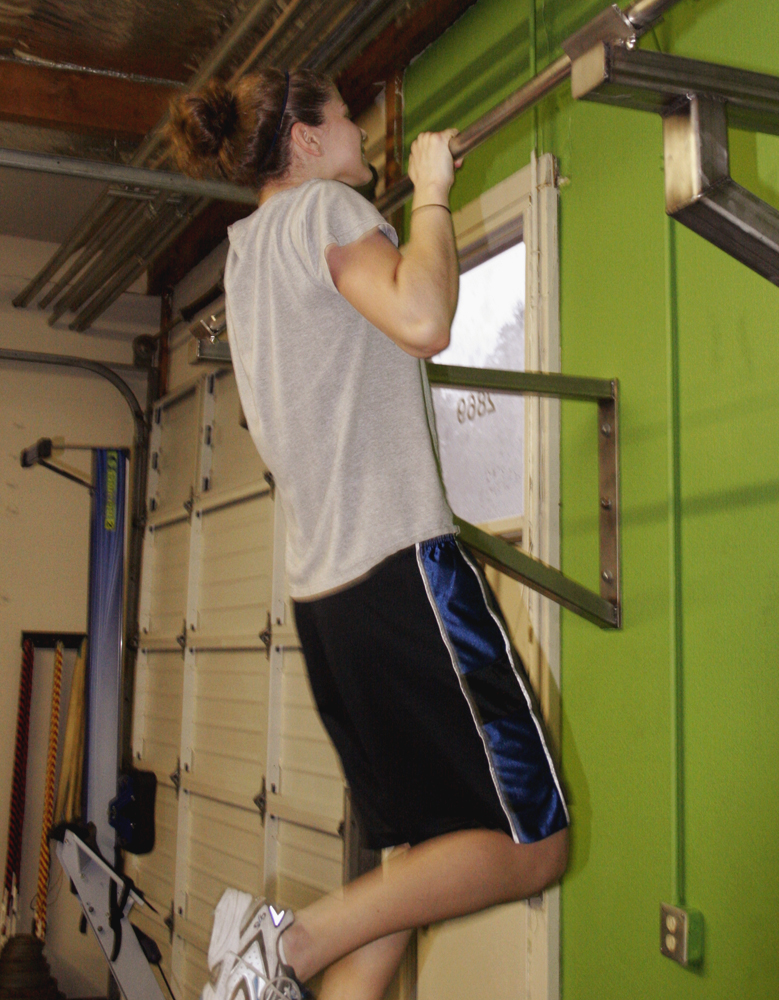
Are you afraid when you walk into your gym and see the strangely contorted metal bars that people like to torture themselves with? Yes, some people hate pull-ups, but those who have discovered the wonders of the pull-up thrive in the bittersweet battle between gravity, muscle strength, and determination.
For most, the love-hate relationship with pull-ups began with the innocent monkey bars. Most kids relish the opportunity to “fly” above the ground using only their own strength. It all goes wrong when we encounter the pull-up bar in our high school physical education class. There isn’t any worse form of humiliation than not being able to do one good pull-up in front of your peers. I know because I’ve been there. And if you’re now in your adult life and still have flashbacks to your failed attempt at defying gravity, it’s time to tackle those demons. Fortunately, the cure for ineptitude to complete the pull-up is pretty simple. Do more pull-ups.
Unfortunately, the pull-up, which is one of the best “bang for your buck” exercises out there, is being recklessly substituted by pull-up machines and pull-down machines. Though both of these machine-assisted training modes can add some variety to a workout by keeping the muscles guessing, nothing can supplant the pull-up’s effectiveness.
Most gym goers understand the most basic benefits of the pull-up. Pull-ups help build your back and biceps. However, when most people go about performing their pull-ups, they tend to focus the tension on the biceps, not the muscles of the back. For those currently doing pull-ups, don’t give yourself a high five just yet. What most people aren’t aware of are the benefits that the pull-up has beyond hypertrophy (increased muscle size) of the muscles of the back including the “lats.” What if I told you that the pull-up could improve your benching strength? Would you believe me?
Not only can pull-ups increase your bench pressing strength, but they have a strength carryover to a large portion of upper body movements. One of the main reasons for the carryover, beyond the improved posterior chain strength, is the tension applied to the muscles involved with grip strength. Besides pulling your whole body weight, one of the more challenging aspects of completing a pull-up is just holding on throughout the whole movement. The whole time you’re gripping that bar and holding on for dear life, your grip is being trained and most likely improving. The carryover effect is experienced when you try to recruit the maximum amount of motor units to complete a movement such as the bench press or dumbbell row. An increase in grip strength can help anyone break through plateaus and reach new levels of training.
A genius and cruel twist to the standard pull-up though can increase the tension put on the grip. Thick bar training has been receiving a lot of press recently with the introduction of products meant to take standard sized bars and make them thicker and more challenging to deal with.
Executing pull-ups on a standard size bar is a task unto itself, but incorporating thick bar training provides a whole new hell to deal with. It can also provide you with a new level of strength and growth unachievable with standard size bars.
If you’re new to pull-ups, start with a standard size bar. But as you become more adept at the movement, think about wrapping a towel or some tape around the bar. You may even want to invest in some thick grips, too.
Another benefit of the pull-up is one that often goes unnoticed. Many people only like to work, or overwork the muscles they can see in the mirror, which can lead to some serious joint problems. They like to believe that the measure of strength in the gym is the bench press. So naturally, bench pressing three times a week is a necessity if you want to get “strong,” right? Unfortunately, bench pressing that much leads to a tightening and shortening of the pectoral muscles, which in turn can leave you in a kyphotic or hunched posture and very weak. A kyphotic posture can also be the result of too much time spent staring into the computer screen playing Farmville.
Don’t think you’re in the clear just because you don’t do any heavy lifting. Those shortened pecs will pull the shoulders forward and, by association, the scapulas as well. The scapula (shoulder blade) is a very delicate piece of the functional human anatomy and a change in its position can cause a multitude of issues in the different functions that the shoulder, arm, and back must perform. Can you guess what the cure for this problem is? You guessed it—pull-ups.
Performing pull-ups will basically reverse the effects of too much pressing. Pull-ups target the scapular retractors, which will help keep the scapula in proper alignment and protect your shoulder from experiencing any kind of impingement or muscle strain. There is a certain form though that you should use if you want to attain all the amazing benefits that pull-ups have to
offer.
When performing a pull-up, there are a few sticking points to remember:
- You’re lifting yourself with the muscles of the back, not with just the biceps.
- Keep your shoulder blades together as much as possible.
- Lean back and pull your chest to the bar.
- Don’t strain your neck (you’ll thank me in the morning).
- Lower yourself under control.
So there you have it. I hope I’ve sold you on the wonders of the pull-up. So simple and yet so effective. If you find yourself crunched for time, look to the pull-up. I mentioned it before, but you’ll get a much bigger return from doing a few sets of pull-ups than a few sets of machine pull-downs. Don’t be afraid to challenge gravity because nothing is better for your back, grip strength, shoulder health, and you.









